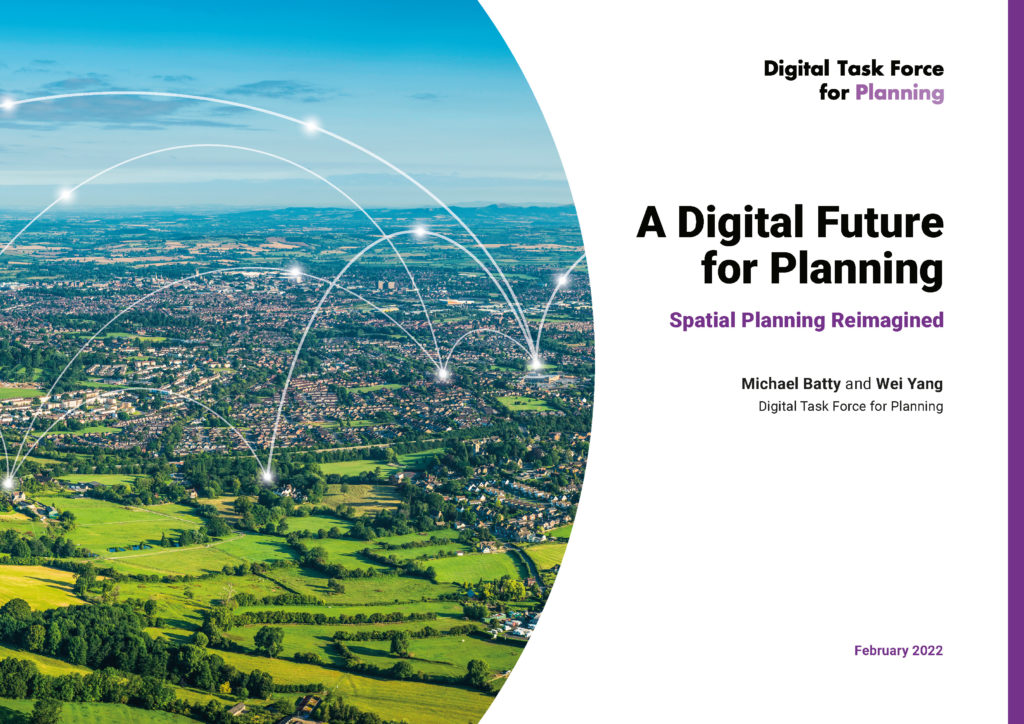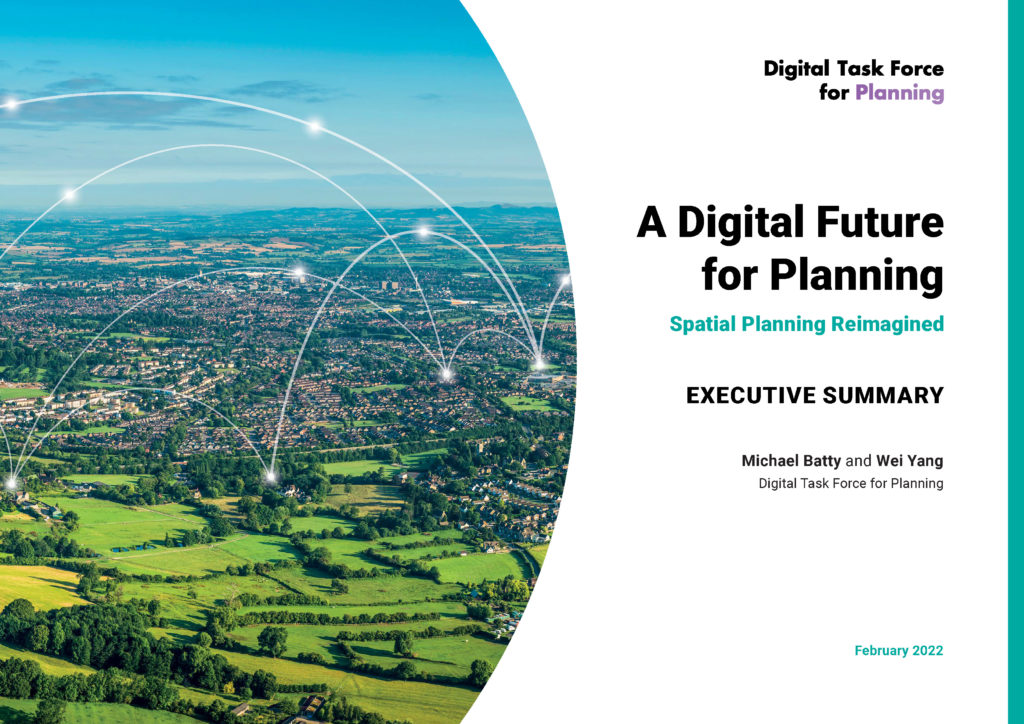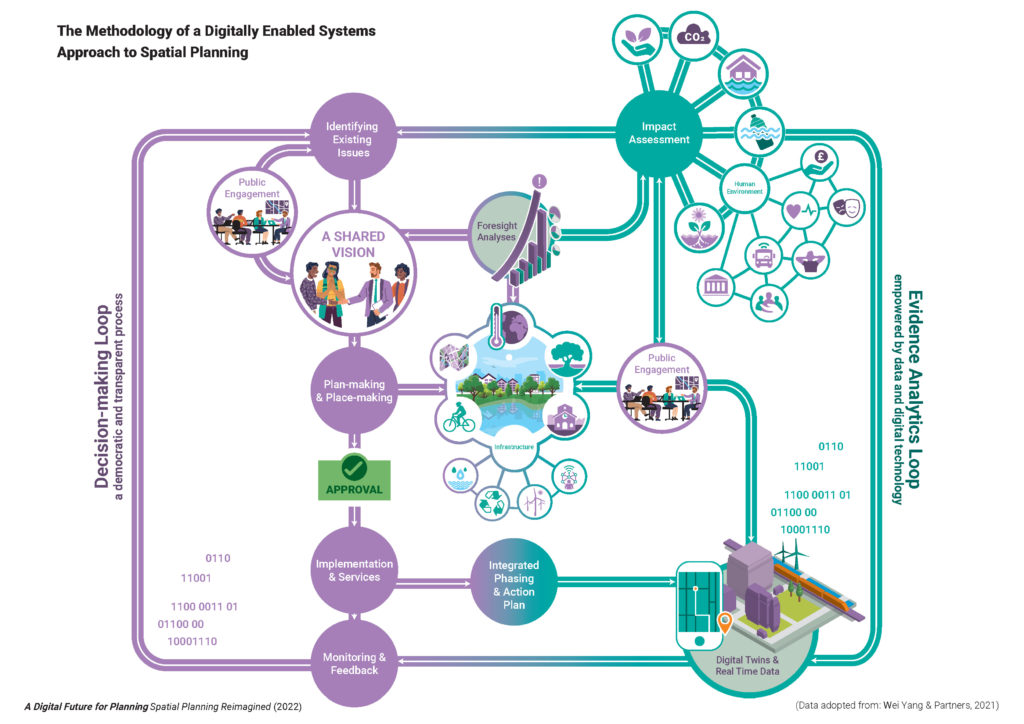Our Report
A Digital Future for Planning: Spatial Planning Reimagined (February 2022)

The Task Force report presents a collective vision for a digital future for planning – not only from planners, but also from a spectrum of like-minded built and natural environment professionals – as they believe at this crucial moment in human history, we have to work beyond professional and political boundaries to tackle multifaceted grand challenges collaboratively.
In light of the transition to a circular economy and based on the fourth Industrial revolution’s focus on redesigning systems, the report proposes a transformative digitalisation of spatial planning – a people-centric process which is enabled by digital technologies. It will generate better engagement in the plan-making process, enhance efficiency and optimise the value of data, and it will allow stakeholders, planners, designers, and policymakers to think intelligently through an evidence-based decision-making process. Participation using digital technologies for communication and design are central to its transformation.
In fact, the report is not about the planning profession itself. It is about reinvigorating the profession, about recreating a reimagined planning profession – a profession that can coordinate the best knowledge and advance the most appropriate digital tools and technologies from related disciplines so that we can achieve a shared vision and to create a better future for everyone.
The Full Report
The Full Report comprises 7 Chapters: Chapter 1 sketches the full extent of digital planning’s potentials and principles; Chapter 2 explains how a new methodology – an integrated digitally enabled systems approach – can work; Chapter 3 sets out the core digital capacities required to deliver this methodology; Chapter 4 examines the status of digital integration in planning; Chapter 5 discusses obstacles and opportunities; Chapter 6 explores the interventions needed to achieve digital integration and transformation within the planning profession; finally, Chapter 7 illustrates what needs to be done next to achieve an integrated vision of future planning. Each chapter concludes with Recommendations which urge government and relevant organisations to adopt a holistic approach using new technologies to grasp the enormous opportunities to develop an integrated systematic approach. Visions and Reflections from Digital Task Force Panel Members, as well as 20 Case Studies are included in the Appendices.
The Executive Summary
The six-page Executive Summary covers key messages from the report under the following headings:
– The grand challenges and a whole systems approach;
– Unlocking the full potential of spatial planning in the digital era;
– Potentials and principles for a digitally enabled approach to spatial planning;
– Creating a new cyclic planning methodology;
– The current progress of digital integration in planning;
– What needs to be done;
– The need to establish a digitally enabled spatial planning profession
The Executive Summary also includes:
– Recommendation headlines;
– Potentials of a digitally enabled spatial planning described by key stakeholders;
– The methodology diagram for a digitally enabled systems approach to spatial planning.
Recommendation Headlines
The Task Force gives eight Recommendations to implement a digital future for planning. Full Recommendation Summaries can be seen at Page 81-83 of the Full Report.
The Methodology of a Digitally Enabled Systems Approach to Spatial Planning
One of the key recommendations of the report is to implement a new spatial planning methodology – a digitally enabled cyclic system in planning through connecting the decision-making loop and the evidence analytics loop.
The Evidence Analytics Loop is about the science of systems; the Decision-Making Loop is the legislative procedure. The former is informed by multi-disciplinary evidence empowered by data and digital technology; the latter is a democratic and transparent process of argument, discussion, speculation, invention, design, innovation and of course politics. The two loops are integrative and interactive with each other, and they can be interlocked in countless ways when adapted to the planning task in hand.



